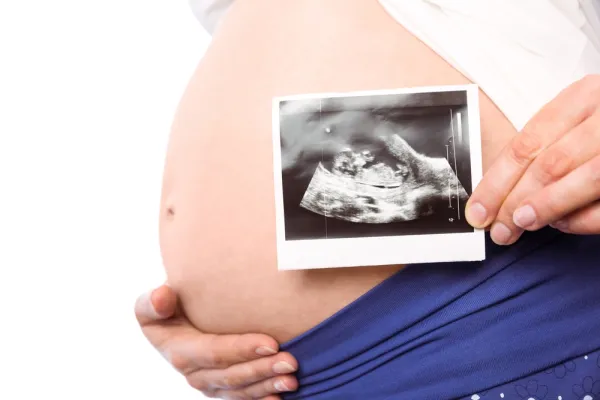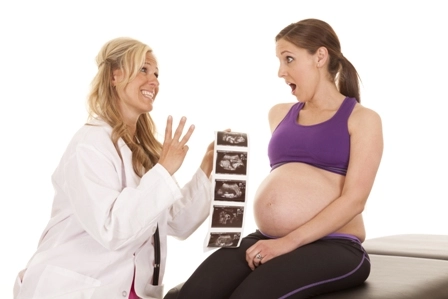Ob-Gyn Coding Alert
Multiple Gestation, Surgical Wound Infection Diagnoses Top Your New Obstetric ICD-10 Codes

Inclusion terms under the new codes will direct you to the right choice.
The World Health Organization (WHO) recently published its list of the new ICD-10 2019 codes, but they won’t go into effect until Oct. 1, 2018. Of these 280 new codes and 170 revisions, the ob-gyn specialty has been hit especially hard—meaning you have a lot to learn. So here’s a breakdown to help you get started.
First, let’s focus on the obstetric codes that will affect your practice.
Manage These Multiple Gestation Additions
You’ll have a new series of multiple gestation codes.
Triplet pregnancies that are “trichorionic triamniotic” mean that each fetus has its own placenta and amniotic sac. You’ve got new ICD-10 codes to reflect this, based on trimester. They are:
- O30.131 (Triplet pregnancy, trichorionic/triamniotic, first trimester)
- O30.132 (Triplet pregnancy, trichorionic/triamniotic, second trimester)
- O30.133 (Triplet pregnancy, trichorionic/triamniotic, third trimester)
- O30.139 (Triplet pregnancy, trichorionic/triamniotic, unspecified trimester).
You have similar codes for quadruplet pregnancy:
- O30.231 (Quadruplet pregnancy, quadrachorionic/quadra-amniotic, first trimester)
- O30.232 (Quadruplet pregnancy, quadrachorionic/quadra-amniotic, second trimester)
- O30.233 (Quadruplet pregnancy, quadrachorionic/quadra-amniotic, third trimester)
- O30.239 (Quadruplet pregnancy, quadrachorionic/quadra-amniotic, unspecified trimester).
For other numbers of fetuses (such as quintuplets, sextuplets, or septuplets), check out O30.83- (Other specified multiple gestation, number of chorions and amnions are both equal to the number of fetuses). Underneath this code, you’ll see the following inclusion terms:
- Pentachorionic, penta-amniotic pregnancy (quintuplets)
- Hexachorionic, hexa-amniotic pregnancy (sextuplets)
- Heptachorionic, hepta-amniotic pregnancy (septuplets).
The required sixth character specifies the trimester (1, first trimester; 2, second trimester; 3, third trimester; 9, unspecified trimester). “While this specificity is valuable information for health information/statistics, unfortunately most physician coders do not get this much information when coding for professional services,” says Jan Rasmussen, PCS, CPC, ACS-GI, ACS-OB, owner/consultant of Professional Coding Solutions in Holcombe, Wis.
“In the case of triplets, we more likely will end up coding O30.10- (Triplet pregnancy, unspecified number of placenta and unspecified number of amniotic sacs) due to poor diagnostic information supplied by the physician even in the medical record.”
Succeed in New Surgical Wound Infection Diagnoses
Obstetric patients undergoing cesarean sections or perineal repairs may develop infections at the wound site. You currently have code O86.0 (Infection of obstetric surgical wound), but you will have the addition of an Excludes1 note stating: “complications of procedures, not elsewhere classified (T81.4-), postprocedural fever NOS (R50.82), postprocedural retroperitoneal abscess (K68.11).” Remember, an Excludes1 note means that these two codes can never be coded together, and you should code either one or the other, says Melanie Witt, RN, MA, an independent coding expert based in Guadalupita, New Mexico.
Expanding on O86.0, you will find six new additions, including O86.00 (Infection of obstetric surgical wound, unspecified) and O86.01 (Infection of obstetric surgical wound, superficial incisional site). Under this latter code, you’ll see the inclusion terminology stating, “Subcutaneous abscess following an obstetrical procedure” and “Stitch abscess following an obstetrical procedure.”
Similarly, you’ll find O86.02 (Infection of obstetric surgical wound, deep incisional site) along with the inclusion terminology of “Intramuscular abscess following an obstetrical procedure” and “Sub-fascial abscess following a procedure.”
New code O86.03 (Infection of obstetric surgical wound, organ and space site) includes the inclusion terminology saying “Intraabdominal abscess following an obstetrical procedure” and “Subphrenic abscess following an obstetrical procedure.”
Code O86.04 (Sepsis following an obstetrical procedure) directs you to “Use Additional code to identify the sepsis.” “Keep in mind that the additional code they are asking for is the organism causing the sepsis, not puerperal sepsis (O85),” Witt says. “For example, A40.0 (Sepsis due to streptococcus, group A) or A40.1 (Sepsis due to streptococcus, group B).”
Finally, you also need to know O86.09 (Infection of obstetric surgical wound, other surgical site).
“These are great codes to have as superficial wound infections may not require significant treatment whereas more significant surgical wound infections may allow for additional reimbursement using modifier 24 on an EM service or an additional paid surgical procedure,” Rasmussen cheers.
Lastly, Check Out New Encounter Code, Plus One Revision
You have one additional new obstetric code, and that’s Z13.32 (Encounter for screening for maternal depression or Encounter for screening for perinatal depression).
You’ve also got one obstetric revision to note. The old description to O00.212 (Left ovarian pregnancy without intrauterine pregnancy) will become (Left ovarian pregnancy with intrauterine pregnancy) (Emphasis added).
Related Articles
Ob-Gyn Coding Alert
- ICD-10 2019:
Multiple Gestation, Surgical Wound Infection Diagnoses Top Your New Obstetric ICD-10 Codes
Inclusion terms under the new codes will direct you to the right choice. The World [...] - ICD-10 2019:
Navigate These New and Numerous Q, R, T, and Z Gynecology Options
Don’t forget: You’ll need to include an “x” placeholder for these T codes. You’ve got [...] - Quick Quiz:
Can You Answer These 5 EOB-Related Questions?
Check out this list of the elements EOBs and RAs contain. Explaining explanation of benefits [...] - You Be the Coder:
Clarify Coding for BPP and Limited Twin Ultrasounds
Question: My ultrasound tech scanned a patient with a twin pregnancy. The patient is 31.5 [...] - Reader Question:
Demystify Commonly Used Modifier for Coding Success
Question: We are not sure when we can append modifier 25. Could you please explain [...] - Reader Question:
Abolish PHI Risk by Asking 6 Questions
Question: I’m always concerned about protecting our patients’ health information, especially if they receive care [...] - Reader Question:
Tackle This Uterine Tandem Scenario
Question: My ob-gyn diagnosed a 72-year-old patient with uterine cancer. She is not a candidate [...]




